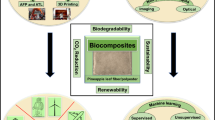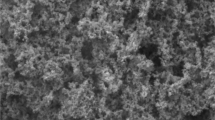Abstract
A representative volume element (RVE) model with porosity for 2D woven chemical vapor infiltration (CVI) SiCf/SiC composites is presented, and its mechanical properties are analyzed. Samples are divided after a tensile test, and their cross sections are scanned with a scanning electron microscope. The size of the feature structure of the RVE model is determined based on the measurement statistics of the feature structure parameters. In accordance with CVI technology, the deposition rates of the matrix in each direction along the surface of fiber bundles are assumed to be similar. The porosity structure is formed naturally when the RVE model is established. The RVE model conforms to the real structure and accurately shows the location and geometric shape of internal porosity. The relative error of the tensile modulus value estimated from the RVE model through the asymptotic expansion homogenization method and experimental data is 3.26%. Therefore, the RVE model is accurate and efficient.













Similar content being viewed by others
References
E.J. Barbero, J. Trovillion, J.A. Mayugo, and K.K. Sikkil, Finite Element Modeling of Plain Weave Fabrics from Photomicrograph Measurements, Compos. Struct., 2006, 73, p 41–52
J.J. Xiong, R.A. Shenoi, and J. Gao, An Analytical Model to Predict Residual Thermal Stress in 2D Orthogonal Plain Weave Fabric Composites, Int. J. Solids Struct., 2009, 46, p 1872–1883
IAA Bakar, O Kramer, S. Bordas, T. Rabczuk. Optimization of Elastic Properties and Weaving Patterns of Woven Composites, Compos. Struct., 2013, 100, p 575–591
E. Obert, F. Daghia, P. Ladevèze, and L. Ballere, Micro and Meso Modeling of Woven Composites: Transverse Cracking Kinetics and Homogenization, Compos. Struct., 2014, 117, p 212–221
Z Chen, F Yang, S.A. Meguid. Multi-level Modeling of Woven Glass/Epoxy Composite for Multilayer Printed Circuit Board Applications, Int. J. Solids Struct., 2014, 51, p 3679–3688
C. Chateau, L. Gélébart, M. Bornert, and J. Crépin, Micromechanical Modeling of the Elastic Behavior of Unidirectional CVI SiC/SiC Composites, Int. J. Solids Struct., 2015, 58, p 322–334
J.L. Lions, Some Methods in the Mathematical Analysis of Systems and Their Control, Science Press, Beijing, 1981
S. Kesavan, Homogenization of Elliptic Eigenvalue Problem I, Appl. Math. Optim., 1979, 5(1), p 153–167
S. Kesavan, Homogenization of Elliptic Eigenvalue Problem II, Appl. Math. Optim., 1979, 5(1), p 197–216
C Junzhi and C Liqun, Finite Element Method Based on Two Scale Asymptotic Analysis, Math. Numer. Sin., 1998, 20(1), p 89–102
B. Hassani and E. Hinton, A Review of Homogenization and Topology Optimization I—Homogenization Theory for Media with Periodic Structure, Comput. Struct., 1998, 69, p 707–717
B. Hassani and E. Hinton, A Review of Homogenization and Topology Optimization II—Analytical and Numerical Solution of Homogenization Equations, Comput. Struct., 1998, 69, p 719–738
B. Hassani and E. Hinton, A Review of Homogenization and Topology Optimization III—Topology Optimization Using Optimality Criteria, Comput. Struct., 1998, 69, p 739–756
Yu Wenbin and Tian Tang, Variational Asymptotic Method for Unit Cell Homogenization of Periodically Heterogeneous Materials, Int. J. Solids Struct., 2007, 44, p 3738–3755
S.L. Angioni, M. Meo, and A. Foreman, A Comparison of Homogenization Methods for 2-D Woven Composites, Compos. B, 2011, 42, p 188–189
MRE Nasution, N Watanabe, A Kondo, and A Yudhanto, Thermomechanical Properties and Stress Analysis of 3-D Textile Composites by Asymptotic Expansion Homogenization Method, Compos. B, 2014, 60, p 378–391
X. Shen, L. Gong, Numerical Modeling of Braided Composites Using Energy Method. In: Proceedings of the ASME 2014 International Mechanical Engineering Congress & Exposition IMECE2014 November 8–13, 2014, Montreal, Quebec, Canada
D. Kenaga, J.F. Doyle, and C.T. Sun, The Characterization of Boron/Aluminum Composite in the Nonlinear Range as an Orthotropic Elatic–Plastic Material, Comput. Mater. Sci., 1987, 21(6), p P516–P531
C.T. Sun and R.S. Vaidya, Prediction of Composite Properties from a Representative Volume Element, Compos. Sci. Technol., 1996, 56, p P171–P179
J. Lamon, B. Thommeret, and C. Percevault, Probabilistic-Statistical Approach to Matrix Damage and Stress ± Strain Behavior of 2-D Woven SiC/SiC Ceramic Matrix Composites, J. Eur. Ceram. Soc., 1998, 18, p 1797–1808
Acknowledgment
The authors are grateful and in deep debt to the National Key Laboratory of Thermostructure Composite Materials of the Northwestern Polytechnical University for providing the material parameters and tensile samples.
Author information
Authors and Affiliations
Corresponding author
Rights and permissions
About this article
Cite this article
Shen, X., Gong, L. RVE Model with Porosity for 2D Woven CVI SiCf/SiC Composites. J. of Materi Eng and Perform 25, 5138–5144 (2016). https://doi.org/10.1007/s11665-016-2393-9
Received:
Published:
Issue Date:
DOI: https://doi.org/10.1007/s11665-016-2393-9




